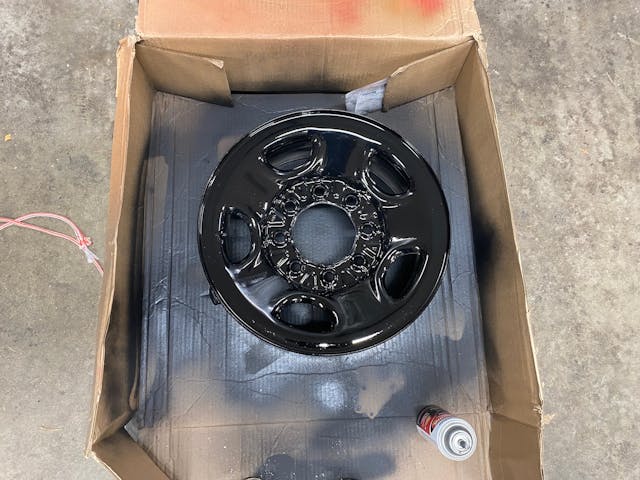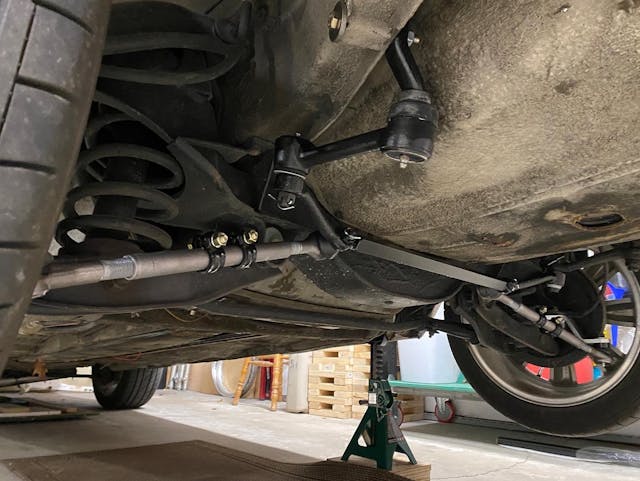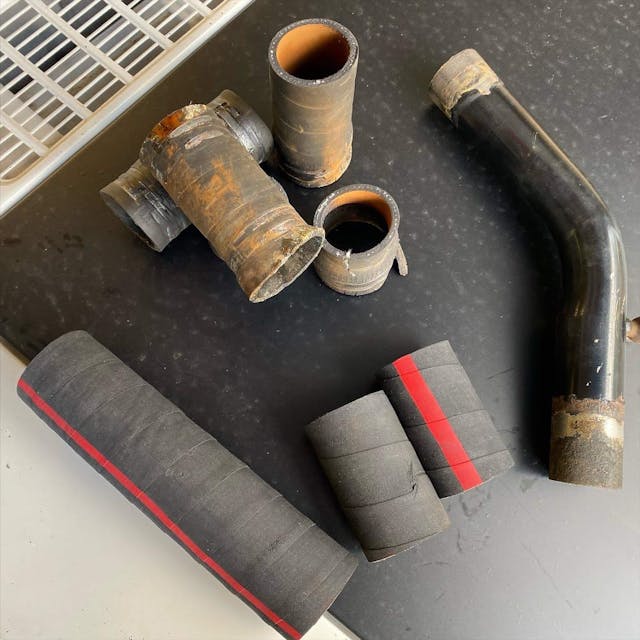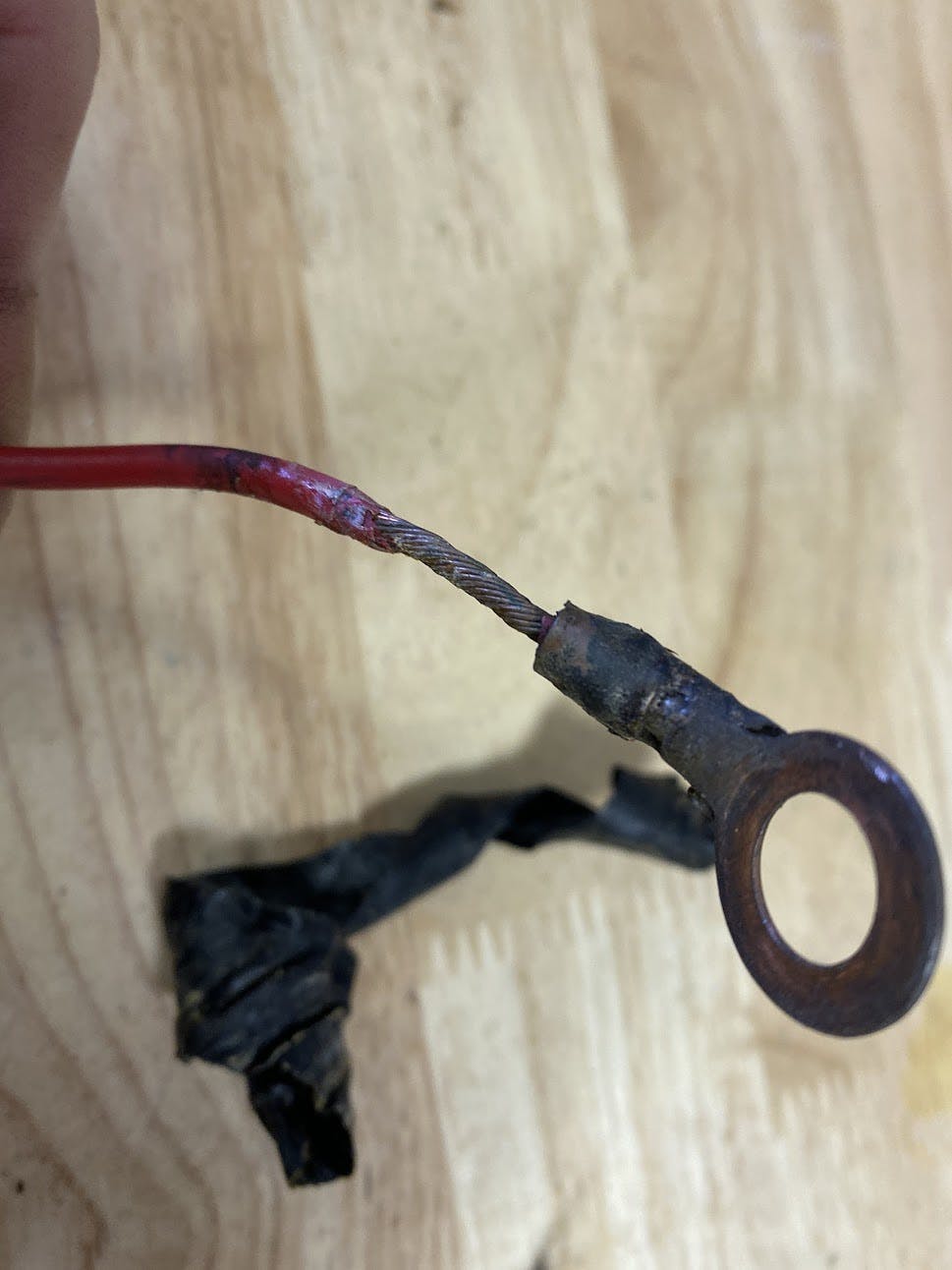11 winter project ideas for every skill level
Not all car lovers are lucky enough to have an endless driving season. Most of us are stuck with at least a few weeks, or months, where our beloved rides are parked and waiting for the snow, or more importantly the salt, to clear from the roads so we can resume enjoying our cars the way they were meant to be enjoyed. The down time can be tough, but those winter months are a great time to seek out less time-sensitive projects. While we often think of “winter projects” as items that require high degrees of skill, not everything worth doing in the off season needs to be that intense. In the interest of being inclusive, we decided to put together a list of ideas for all skill levels to take some pride in their car and complete some DIY tasks during the colder weather.
Paint correction

The first thing that most notice about a car is its form, but the second is the paint. Long periods of storage are the perfect time to give aging paint the attention it deserves. If if you wash and wax your car religiously, there will inevitably be small scratches that build up and cause a light haze in the paint. A light hand polish is a good starting point and you have all season so don’t be afraid to take breaks and stop to admire your work. Heavier scratches might require the use of power tools; if that’s the case, be sure to get comfortable with how the tool and compound works on a test piece before tackling your hood. A full paint-strip and respray is a large task for one winter—caring for the paint you already have is not.
Wheel refinishing

You aren’t going to miss out on a drive or a gathering this time of year, so might as well put the car up on jack stands and pull the wheels. A fresh coat of paint or even just a deep cleaning can dress up your ride more than most realize. For example, there are masking kits and rattle-can paint kits that can be purchased for Pontiac wheels that make refreshing your wheels easier than ever. You can even leave the tires on to do the work.
Wiring inspection
Yes, we know you hate wiring. That’s part of why this suggestion is involves inspecting the wire, and nothing more. A loose ground, worn-through insulation, or a weak connection can all conspire to leave you stranded on the side of the road or spending hours searching for the issue when your car is acting up. Take the time now to pour over the wiring harness and make sure it’s in tip top condition. This can often can be done with just a decent pair of eyes, but if something looks out of place or wrong, you might need a multimeter—which we suggest having around your garage anyway.
Fluid flushes

When is the last time you changed your coolant? Brake fluid? If you don’t know or the date is beyond a few years, you should ring up a few bottles at the auto parts store and get out your drain pan. Even with sparing use, fluids age. Flushing is cheap insurance against corrosion and unplanned failure. This can be as simple as a drain and fill, and get as complicated as pushing fresh fluid through the brakes without introducing air. Take the time to get this right, and you can be confident that overheating or a soft brake pedal won’t plague your drive come spring.
A chassis lube
It used to be a part of regular service, but now is rarely talked about since these cars rarely rack up miles like they did when new. Grab a grease gun and push in fresh grease to any chassis fittings outlined in your service manual. Don’t forget the window regulators, heater blend door adjusters, door latch mechanisms, and all the hood or trunk hinges for extra credit.
Steering box adjustment and steering system inspection

Most folks think slightly wandering steering in an old car simply comes with the territory—but it might not have to be. Most steering boxes have a point of adjustment that can remove some slop and play from the system. Combine this with a check of the rest of the steering components (tie rod ends, pitman arms, ball joints, etc.), and you will turn into your spring cruise in with a little extra confidence.
LED bulbs
It only takes a few minutes driving among today’s vehicles to realize that modern headlights and taillights have gotten bright. Vintage car lamps are, well, not. Incandescent bulbs were pretty good for a long time but it is easier than ever to retrofit your vintage ride with light emitting diode (LED) bulbs that put out more light while drawing less power. Win/win, especially when you add in that LEDs also last longer and fit into factory sockets in most applications.
Research
This one is for those of you who don’t want to pick up tools or have cars that need to be stored away from home. Find a book that documents the history of your car or its manufacturer and get to reading. Learn at least one new thing and be sure to share it next time someone strikes up conversation while you are out and about.
Leather cleaning and conditioning
Your interior ages slowly enough that you might not even realize how dirty it is. Reach into the cleaning solutions drawer and get your leather or cloth seats cleaned up. Bonus points if you deep clean your carpet while you’re in there. These chemicals often need a little time to dry, making winter storage the perfect time to ensure that everything gets clean and dry before you are sitting in the seat again.
Spare-tire inflation check
We hope you don’t need it either, but you certainly want your spare tire to be ready if you do. Roll under the car or pull off the cover and inspect that spare tire. You might need to replace it completely, or just add some air to make sure it’ll be ready to roll in a sticky situation.
Under-hood rubber inspection

Similar to inspecting your wiring, grab a flashlight and get under the hood to check on your rubber hoses and lines. Engine compartments get hot, and that takes its toll on rubber pieces. If the hoses are getting stiff or showing any signs of cracking, it’s time to go ahead and replace them. Yes, we saw The World’s Fastest Indian too, but filling those cracks with shoe polish is a cosmetic bandaid, not a savvy fix. If you want to prevent an exploding hose from leaving you stranded waiting for a tow truck, skip the polish and head to the parts store.
Check out the Hagerty Media homepage so you don’t miss a single story, or better yet, bookmark it.





I have to ask: Do you folks have a heated garage or live in a temperate climate? I have neither here in Michigan. Let’s see – winter ends about March 20; that’s about right.
LED’s, I agree with Ryan L Batch that LED’s for Headlights are just not a great look. However on both my old cars with tiny taillights, I notice a huge difference with the LED’s in the running/brake lights. So my brake lights are upgraded, but my headlights are still dangerously authentic!
Doesn’t hurt with old 6-volt domestic cars to paint the inside of the tail light housings with gloss white paint, at the very least line them with aluminum foil, shiny side out, check that grounds are clean, tight.
Project # 1: Install a modern Mini-Split A/C and heat unit in the garage. All other projects become much easier after that. LED light upgrades work on any older car with addition of an inline resistor, and digital flasher. 55 watt Halogen headlamp bulbs are a great upgrade, but you should install a relay near the lamps to deliver full amperage to the lights directly from the battery. Original circuit can trigger the relay. You can finish both of these projects by New Years, what will you do for the rest of the time?
On the LED bulbs your car may need a resistor so that things light up properly and not blink, flash etc in weird ways.
Amazing timing, this afternoon I was just looking at my wheels on my 1972 GTO-455-HO 4 speed, as well as the heater hoses/rad hoses, and the 10 plus year old antifreeze. Older brake fluid typically lasts a long time as well but grabs moisture, ever wonder why the low spots on older cars brake line systems are typically where the line fails? Water is heavier, and when old cars sit for long periods the water migrates to the lowest points in the lines, they rot from inside as well as outside from moisture. Also check the date codes on those” modern” radial tires you put on years ago, they may have lot’s of tread left but after 10 years you need to take a real good look at them for dry cracking, might save your car as well as yourself and your passengers.
So use DOT 5 silicone brake fluid per directions on container. NAPA and other quality auto parts stores carry it. Regardless brand, it is all produced by Dow Corning. DOT5 is non-hydroscopic; does not absorb moisture from the ambient air like DOT 3 and DOT 4. This is old news. We have friends with the same batch installed back in the 1980s. It still looks and is as good as new.
We’re getting car care advice from someone with decade-old antifreeze?
First, skip antifreeze unless your car will see two consecutive nights of hard freeze, 30 or below, or is outdoors with wind/chill factor, or you have air conditioning, in which case you require 15% antifreeze to protect heater core even in LA or Phoenix in August.
Cars run cooler with straight water and a quality rust/corrosion inhibitor like Red Line Water Wetter or http://www.no-rosion.com, and the latter’s tech link is all the cooling system care info you’ll ever need whether fully iron or aluminum system. Never use distilled water, which is ion hungry; leaches minerals, like tin, lead, solder from your radiator, cooling system. Best is reverse osmosis water, available at Rite Aid, CVS, etc.
Instead of analyzing destruction, simply, easily, inexpensively a v o i d it.
Have a 1972 Pontiac or ’37 Chevrolet or ’32 Duesenberg or ’58 Bristol or anything else on wheels has absolutely nothing to do with the above.
Most all cars have a thermostat in the cooling system. Temerature of coolant therefore has nothing to do with what type of coolant you are running. Water, antirfeeze mix whatever. Thermostat determines temperature, nothing else.
I’m rather surprised by the positive comments about LED headlights. Clearly there are people that haven’t been on the receiving end of a Ford Super duty with its brights on at an intersection. Getting blinded is putting it mildly. Need a welders helmet for protection.
The winter and some unexpected sick leave have seen me make a comprehensive list to pick away at over the winter.
It’s amazing how quickly a dozen little jobs add up in to a big expense, but I like to tinker and I’m afraid if I had nothing to fix I’d sell it.
Interesting experience with LED headlight bulbs: My son replaced the dim bulbs on his ’04 Pontiac Sunfire with LEDs. A “maintenance” light on his dash turned on (separate from the “check engine” light) – a light he didn’t even know was there. Turns out that there’s a circuit that monitors the current draw on the headlights, and turns on this warning light if it detects low current draw in the circuit, indicating that a light may be out. The low current draw of the LED bulbs made the light come on. Now he has a light illuminated on the dash permanently. Annoying, but he does like the brightness of his headlights, so he’s willing to live with it.
I’m going to pull NOM out and put in a 350 roller cammed in , 65 corvette coupe
Winter? This is my weekly like routine.
The LED flasher issue can be resolved. Older vehicles used a mechanical flasher relay and without getting into electrical details, LED bulbs used for blinkers will most likely hyper-flash (flash too quickly). Replacing the mechanical flasher relay with an electrical flasher relay should resolve the problem. There are plug-and-play electrical flasher relays out there that can used to remediate the hyper-flash issue.